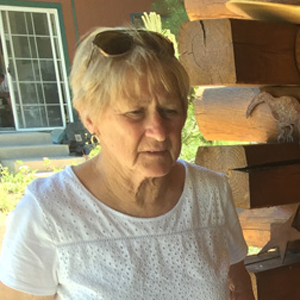Evaluating Gem Quality and Prices
Each gemstone species has unique properties; the informed buyer can save time when he knows what is feasible and what is not. Specific prices will not be listed in this book for two reasons: price lists can be very misleading if you do not truly understand the quality of stone described. There is no standard shorthand for evaluating the quality of most gemstones and prices can vary significantly with slight nuances in color which are impossible to quantify. The gemstone market can also fluctuate rapidly at times. General price indications will be given in retail prices per.
3 Minute Read
Each gemstone species has unique properties; the informed buyer can save time when he knows what is feasible and what is not. Specific prices will not be listed in this book for two reasons: price lists can be very misleading if you do not truly understand the quality of stone described.
There is no standard shorthand for evaluating the quality of most gemstones and prices can vary significantly with slight nuances in color which are impossible to quantify.
The gemstone market can also fluctuate rapidly at times. General price indications will be given in retail prices per carat: low means the retail price for this gemstone is in the two figure range or under $l00 per carat; moderate in the three figure range or $l00 to $999 per carat; expensive means in four figure range or $l,000 to $9,999 per carat; and very expensive means in the five figure range and up: $l0,000 plus.
These are price per carat indications; keep in mind that qualities can vary and prices for very low qualities could be less and high qualities could be more than the vague indications in this book.
Besides the rarity of, and demand for, a particular gem, always keep in mind that all four C's, carat, color, clarity, and cut will heavily influence price.
| Citrine, Trillion, 6.46 carats, Brazil (Photo by David Dikinis) |
The knowledgeable buyer must take some time becoming familiar with quality differences. The only way to do this is to gain experience "looking at" gemstones. This book will explain differences in quality features as much as possible; but true understanding will only come with the physical experience of seeing the stones.
There are about two hundred known mineral species that can be considered gemstones. However, only about twenty of these are available in sufficient quantity and have adequate durability to be practically considered in this text. Each gem variety will be discussed as part of its mineral family, for example, emerald in the beryl family and ruby in the corundum family. Gem varieties in these families share common properties and logically belong grouped together. It makes individual gemstones easier to learn since what you learn about emerald will also teach you about aquamarine, and ruby shares properties with sapphire.
To simplify your gem quest each description will include the practical information you need to know as a buyer: colors, price, treatment, common shapes, availability, durability, localities (where mined), and the important physical properties, refractive index, specific gravity and hardness. Only the most important mining locations will be listed. Please note that the refractive index will be written as R.I. and specific gravity will be written as S.G. Ranges in refractive indexes and specific gravities will vary slightly from text to text.
Color may delineate varieties of a particular gem material. For example, amethyst and citrine are the same except for one is violet and the other is yellow. Common shapes are listed because certain shapes of a particular variety may be very difficult to find. Buyers need to approach shape in a practical manner. You will simply save time by not looking for the impossible and you should know if a shape is rare, because you may have to pay a premium price to obtain it.
Availability will also tell you how easy a gemstone will be to find. Durability will be indicated. Keep in mind that no gemstone is totally indestructible. A wise choice when choosing a mounting will be adequate protection for most gemstones. Treatment will be indicated where it is relevant. Localities where each particular gem is mined will only include major commercial mining localities. The physical properties will give you some indication how much potential brilliance a stone may have, how easily the stone may be scratched, and how dense it is, so you can visualize relative sizes.
My hope is that the following pages will fortify you with at least a basic knowledge and equip you for your foray into the marketplace. Happy shopping!
See Also:
You assume all responsibility and risk for the use of the safety resources available on or through this web page. The International Gem Society LLC does not assume any liability for the materials, information and opinions provided on, or available through, this web page. No advice or information provided by this website shall create any warranty. Reliance on such advice, information or the content of this web page is solely at your own risk, including without limitation any safety guidelines, resources or precautions, or any other information related to safety that may be available on or through this web page. The International Gem Society LLC disclaims any liability for injury, death or damages resulting from the use thereof.
The All-In-One Jewelry Making Solution At Your Fingertips
When you join the Ganoksin community, you get the tools you need to take your work to the next level.
Trusted Jewelry Making Information & Techniques
Sign up to receive the latest articles, techniques, and inspirations with our free newsletter.



